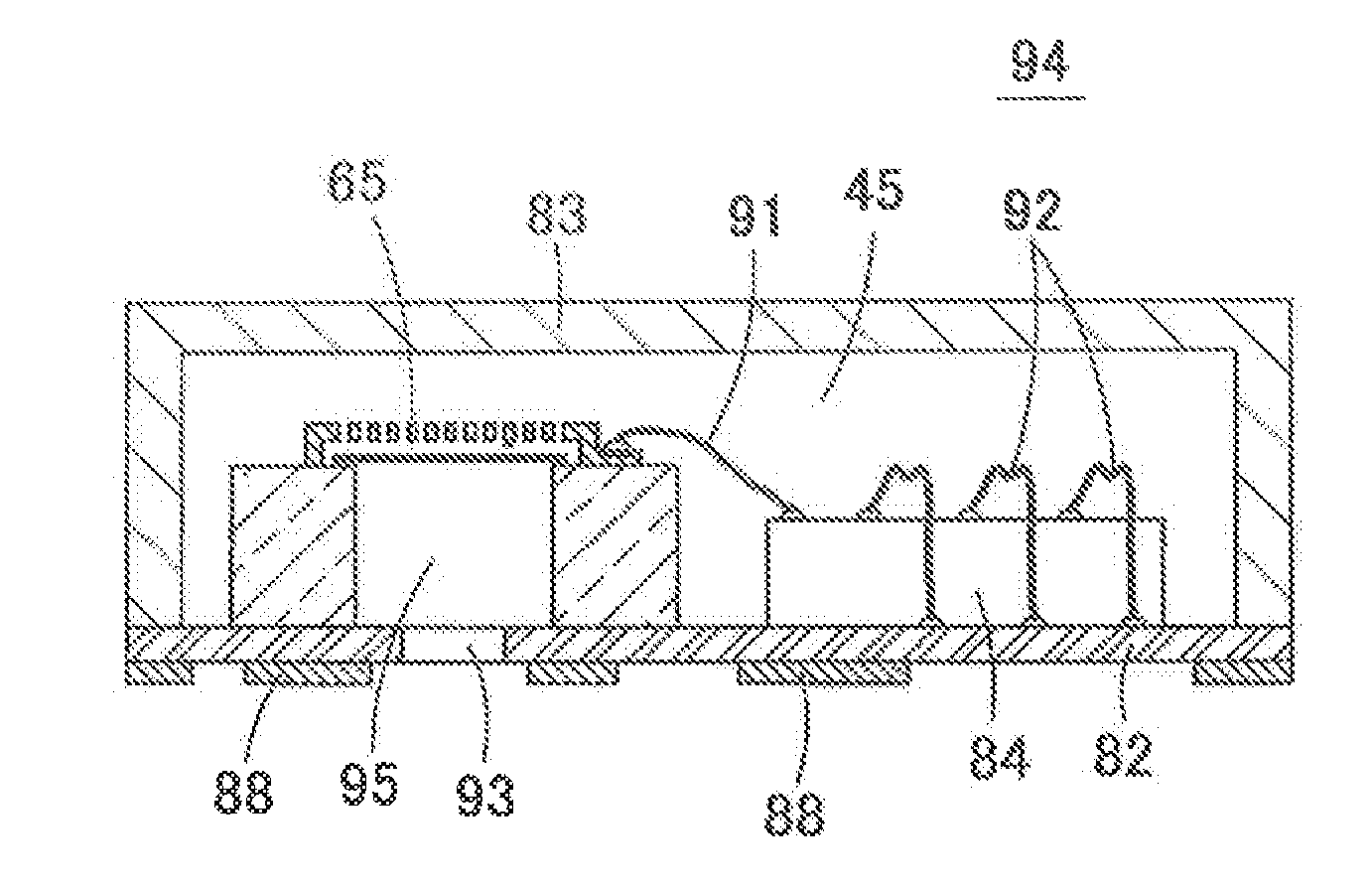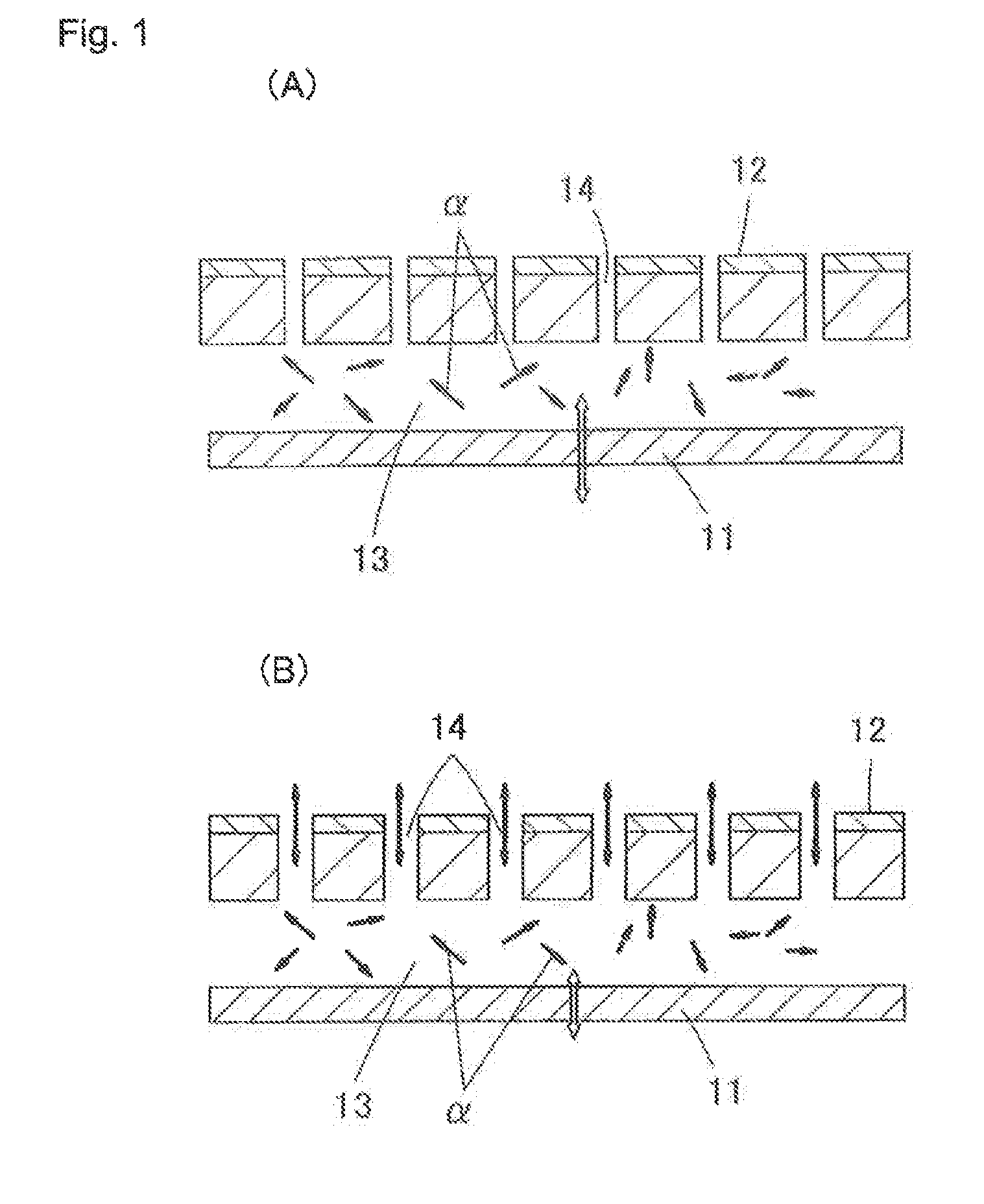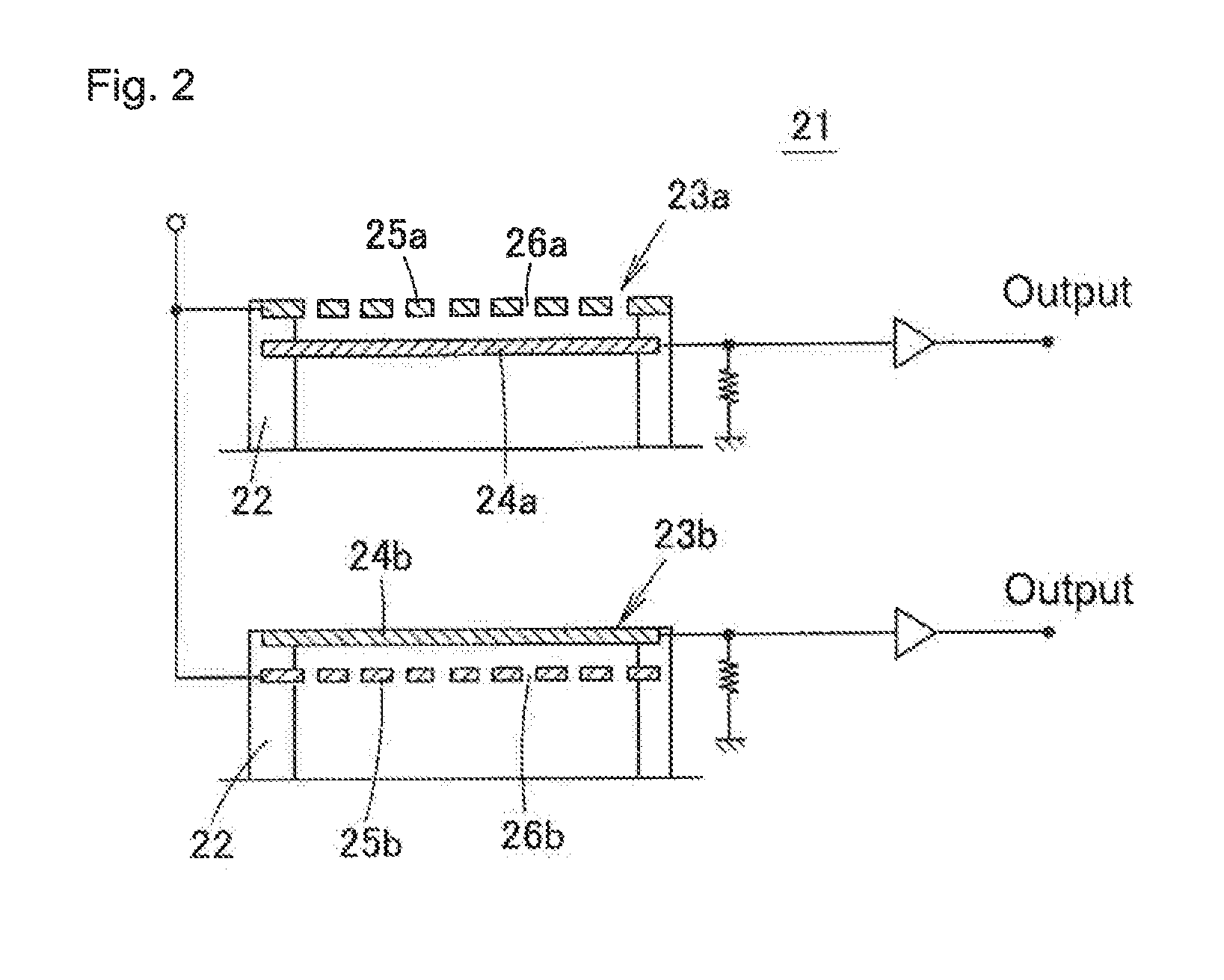Acoustic sensor and microphone
a technology of acoustic sensor and microphone, which is applied in the direction of diaphragm construction, semiconductor electrostatic transducer, microphone structural association, etc., can solve the problems of thermal noise generated in the air gap formed between the diaphragm (movable electrode plate) and the back plate (fixed electrode plate) of the diaphragm, and achieve the effect of improving the s/n ratio of the sensor and preventing the reduction in the size of the sensor
- Summary
- Abstract
- Description
- Claims
- Application Information
AI Technical Summary
Benefits of technology
Problems solved by technology
Method used
Image
Examples
first embodiment
[0063]A structure of an acoustic sensor according to Embodiment 1 of the present invention will be described with reference to FIGS. 4 to 6. FIG. 4 is a sectional view showing an acoustic sensor 41 of Embodiment 1. FIG. 5 is a plan view of the acoustic sensor 41. Further, FIG. 6 is a plan view showing a state where a canopy section 44 has been removed from the acoustic sensor 41.
[0064]This acoustic sensor 41 is a capacitance type element produced through use of the MEMS technique. As shown in FIG. 4, in the acoustic sensor 41, a diaphragm 43 (vibration electrode plate) is provided on the top surface of a silicon substrate 42 (semiconductor substrate) via an anchor 46, and to the top thereof, the canopy section 44 is fixed via a minute air gap 50 (void).
[0065]In the silicon substrate 42 made up of single-crystal silicon, a back chamber 45 (hollow section) penetrating from the front surface to the back surface is opened. The inner peripheral surface of the back chamber 45 may be a ver...
second embodiment
[0110]FIG. 12 is a plan view of an acoustic sensor 61 according to Embodiment 2 of the present invention. FIG. 13 is a plan view of the acoustic sensor 61 in a state where the canopy section 44 has been removed.
[0111]In the acoustic sensor 61 of Embodiment 2, a plurality of (three in the illustrative example) slits 47 are provided in the diaphragm 43, to divide the diaphragm 43 into not less than three areas (four areas in the illustrative example) so as to provide a plurality of substantially independent diaphragms 43a, 43b, . . . . Then, each of the diaphragms 43a, 43b, . . . and the common fixed electrode plate 49 constitute a plurality of acoustic sensing sections 60a, 60b, . . . (capacitors).
[0112]The acoustic sensor 61 of Embodiment 2 is one where the number of division of the diaphragm 43 is larger than that in the acoustic sensor 41 of Embodiment 1. Even when the number of slits 47 increases to increase the number of division of diaphragm 43 in such a manner (the shape and a...
third embodiment
[0113]FIG. 14 is a sectional view of an acoustic sensor 62 according to Embodiment 3 of the present invention. FIG. 15 is a plan view of the acoustic sensor 62 of Embodiment 3.
[0114]In the acoustic sensor 62 of Embodiment 3, the diaphragm 43 is not supported by the anchors 46 as in Embodiment 1, but is simply placed on the top surface of the silicon substrate 42. On the other hand, from a position opposed to the outer periphery of the diaphragm 43 out of the under surface of the back plate 48, a protrusion 71 to be brought into contact with the top surface of the diaphragm 43 is protruded downward. Therefore, when a voltage is applied between the diaphragm 43 and the fixed electrode plate 49, the diaphragm 43 is pulled up by electrostatic attractive force toward the fixed electrode plate 49. The diaphragm 43 pulled up upward comes into contact with the lower end surface of the protrusion 71 and is fixed thereto, and the fixed air gap 50 is formed between the diaphragm 43 and the fix...
PUM
 Login to View More
Login to View More Abstract
Description
Claims
Application Information
 Login to View More
Login to View More - R&D
- Intellectual Property
- Life Sciences
- Materials
- Tech Scout
- Unparalleled Data Quality
- Higher Quality Content
- 60% Fewer Hallucinations
Browse by: Latest US Patents, China's latest patents, Technical Efficacy Thesaurus, Application Domain, Technology Topic, Popular Technical Reports.
© 2025 PatSnap. All rights reserved.Legal|Privacy policy|Modern Slavery Act Transparency Statement|Sitemap|About US| Contact US: help@patsnap.com



